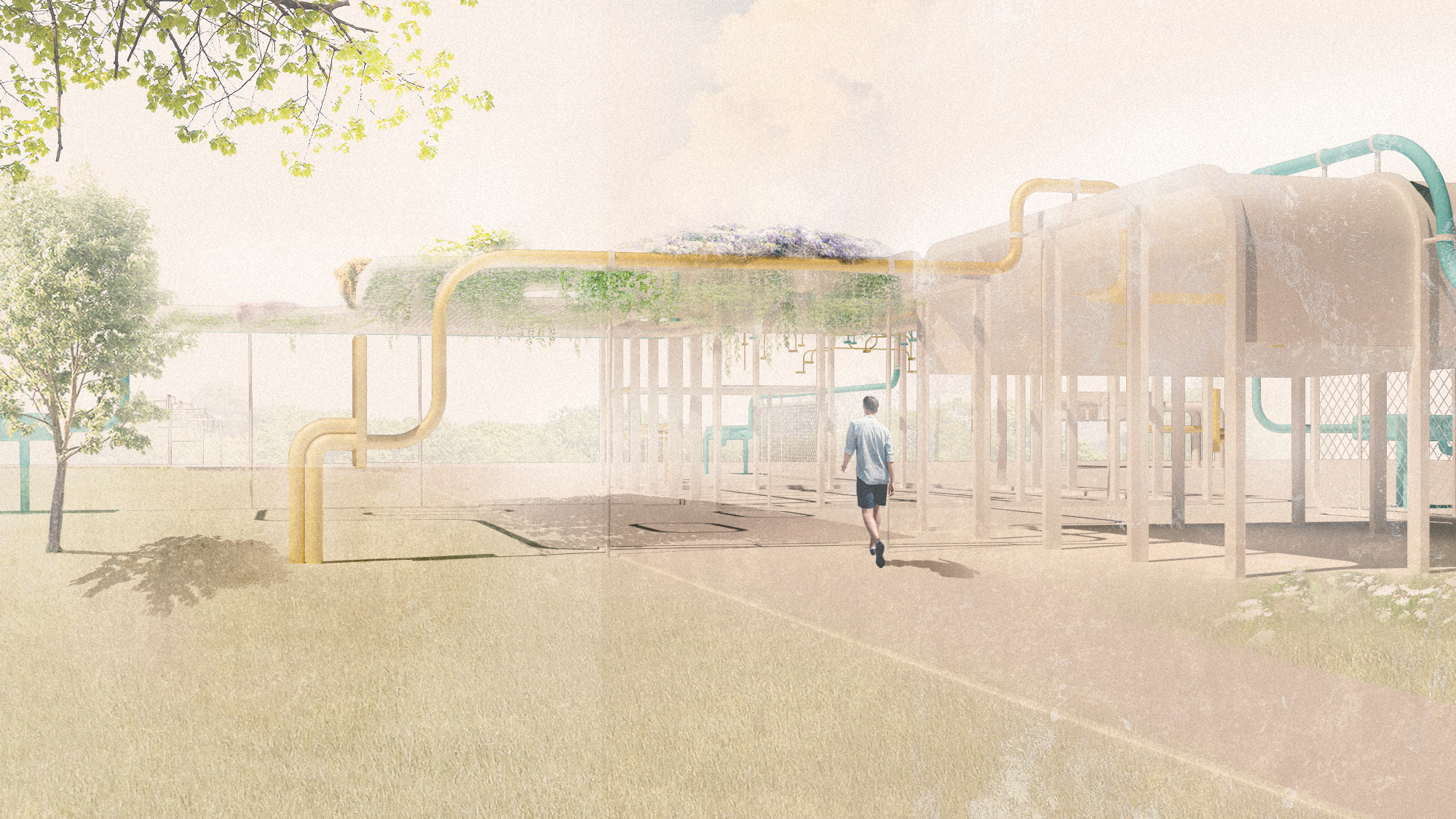Yr3 Design | Taichung Eco Park
| Location | Taichung |
| Type | Civic/Landscape/Environment |
| Construction | Landscaping/Steel |
| Nomination | Featured ESALA Degree Project |
The Critical-Environmental Study
This studio course challenged students to delve into the depths of complex techno-environmental projects and critically examine their architectural precedents. Students were tasked with researching one project from a curated list and presenting their findings in a comprehensive visual report, featuring drawings, models, and accompanying text. The course culminated in a student-led adaptation of the chosen project, set in a future context that urgently addresses the pressing issue of climatic problems.
Taichung Jade Eco Park - Philippe Rahm
I explored Philippe Rahm's ambitious urban-scale project, which aimed to modulate external conditions with cutting-edge climatic devices, bringing interior conditions and processes to the exterior, uncontained environment. The project was a response to the rapidly rising temperatures caused by climate change.
Rahm utilized computation fluid dynamics to identify areas of low heat, low humidity, and low pollution, and further augmented these conditions with strategically placed climatic devices. These devices created "Climatic Pathways," a series of clean, cool, dry paths that intersect to create varying climatic experiences for the public. Through his innovative approach, Rahm sought to define a new architectural paradigm guided by meteorological processes. The result was a constantly evolving interplay of climatic conditions and experiences, brought about by the continuous modulation of the artificial climate along the Climatic Pathways.
Miniaturising the Gigantic
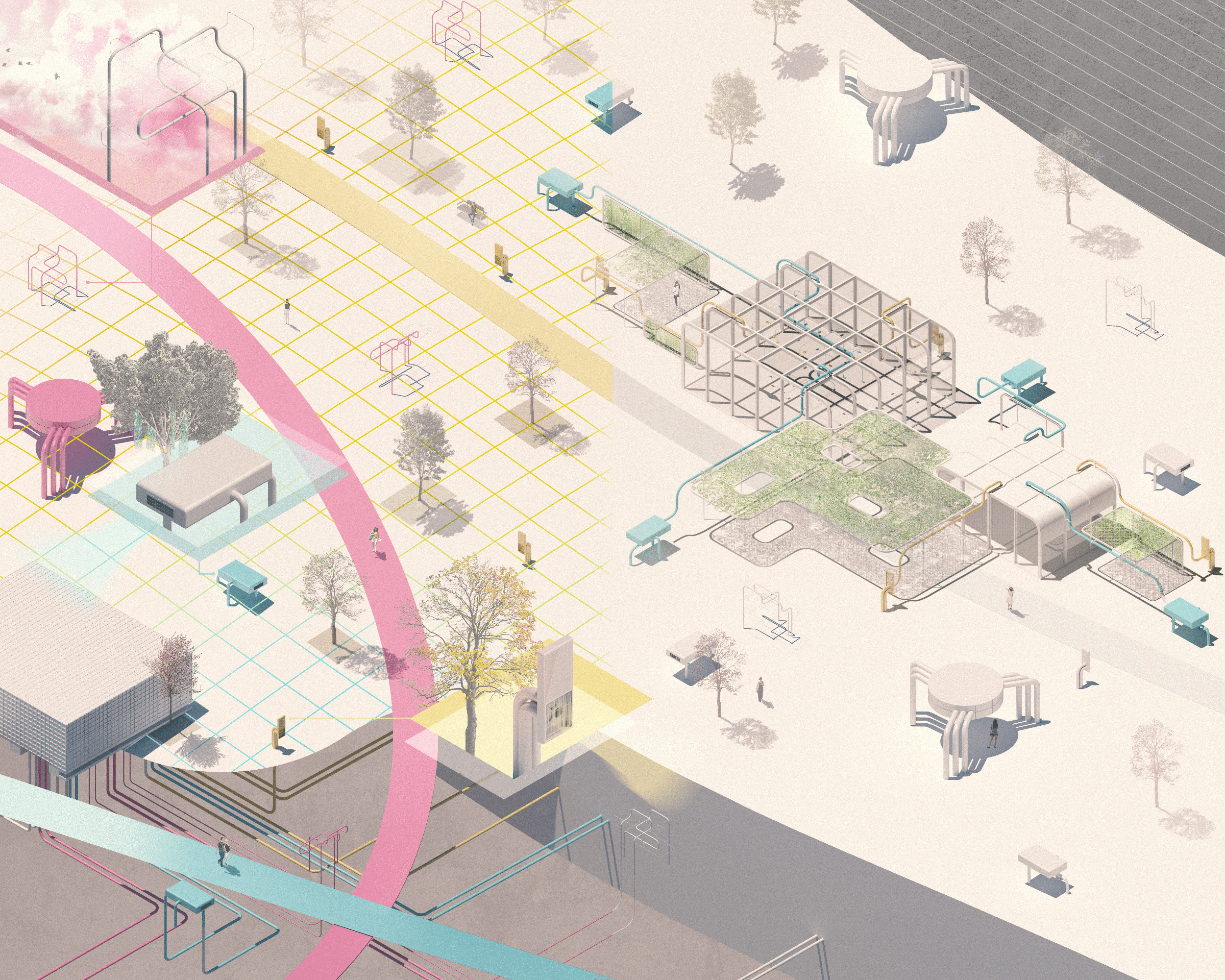
Model Synthesis
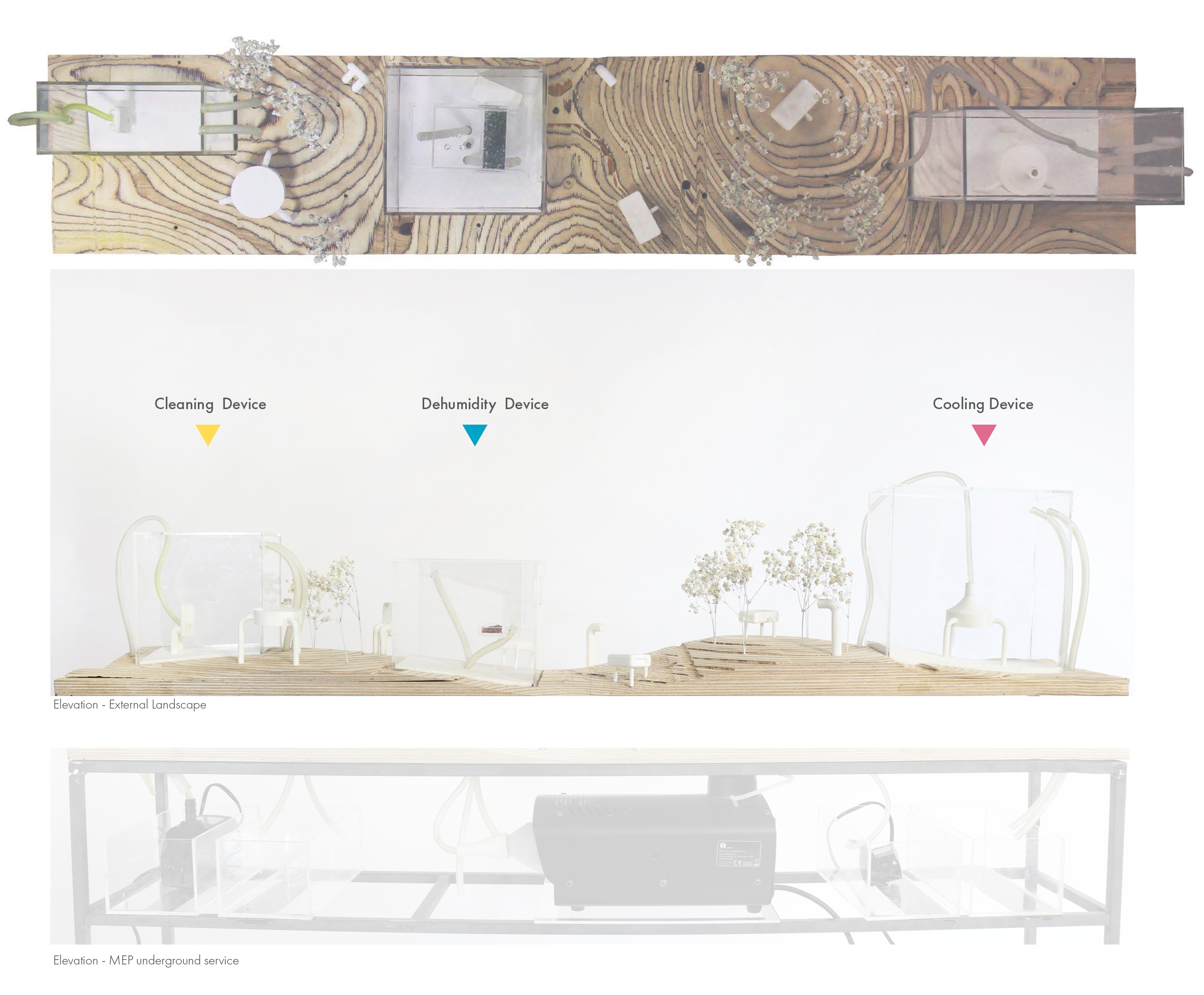
Ozone Eclipse devices reduce pollution by absorbing harmful gases such as aerosols, nitrogen oxides and ozone. Pre-industrial draught devices filter out PM10 and PM2.5 particles in the air. Cleaning devices then blow out clean air.
Humidity levels are reduced by Dry Cloud devices which intake hu- mid air, extract water vapour via silicate bags and release dry air back into the environment.
Cool down air through heat exchange with the city’s water and underground via geothermal ducts where it is cooler. The canopy on top acts as a shading utensil and has insulated skin to prevent heat radiation.
Visualising Models
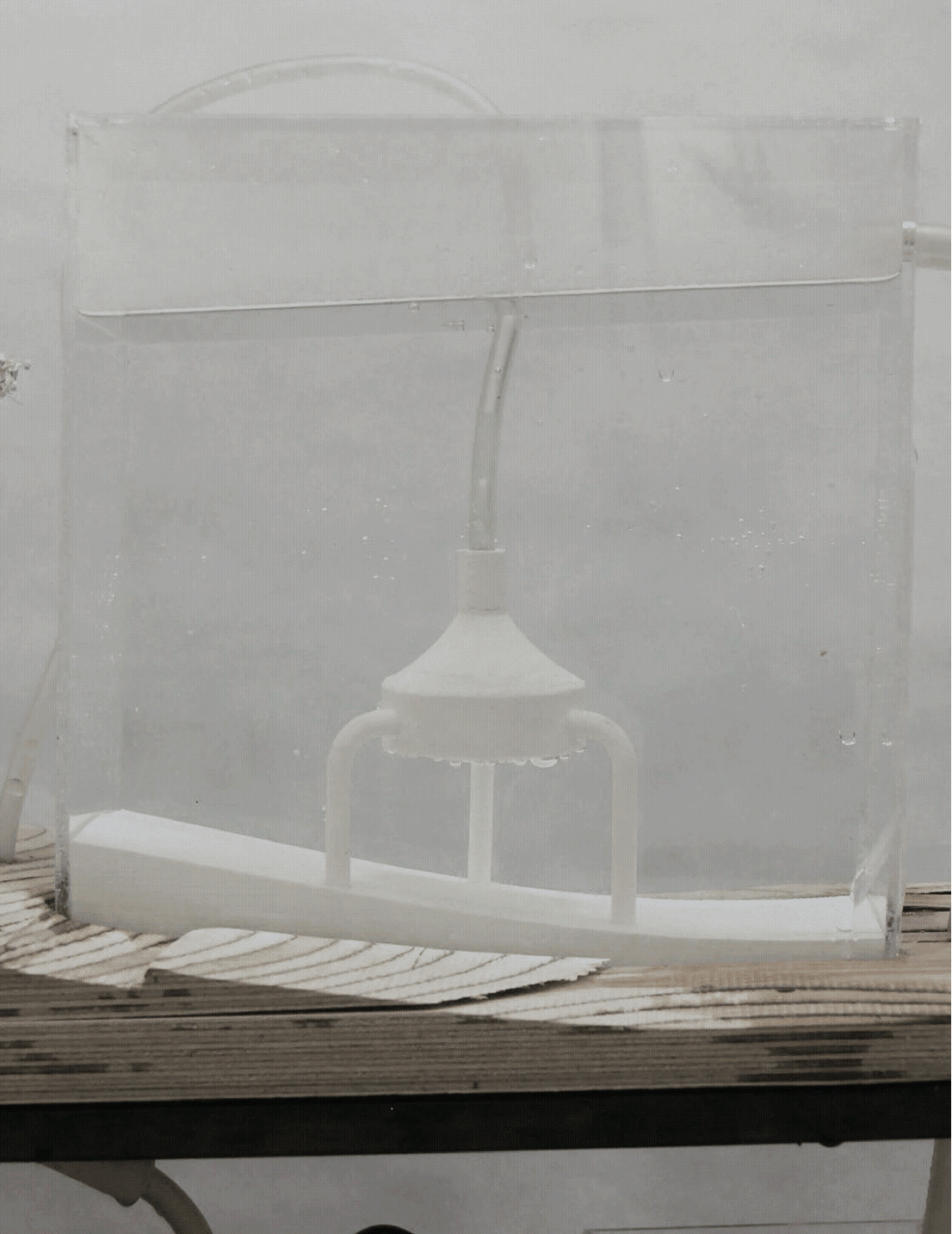
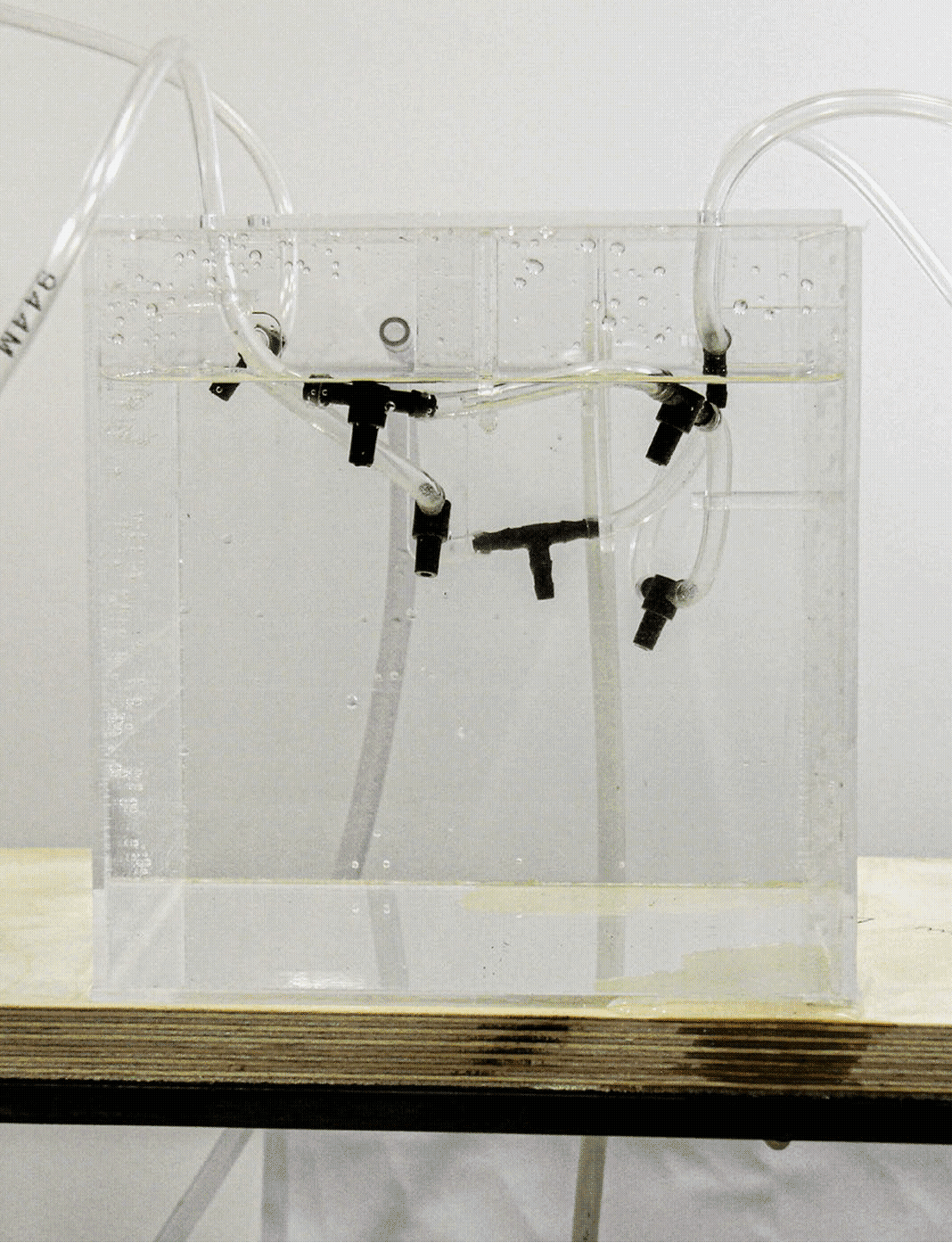
Adapted Experience
